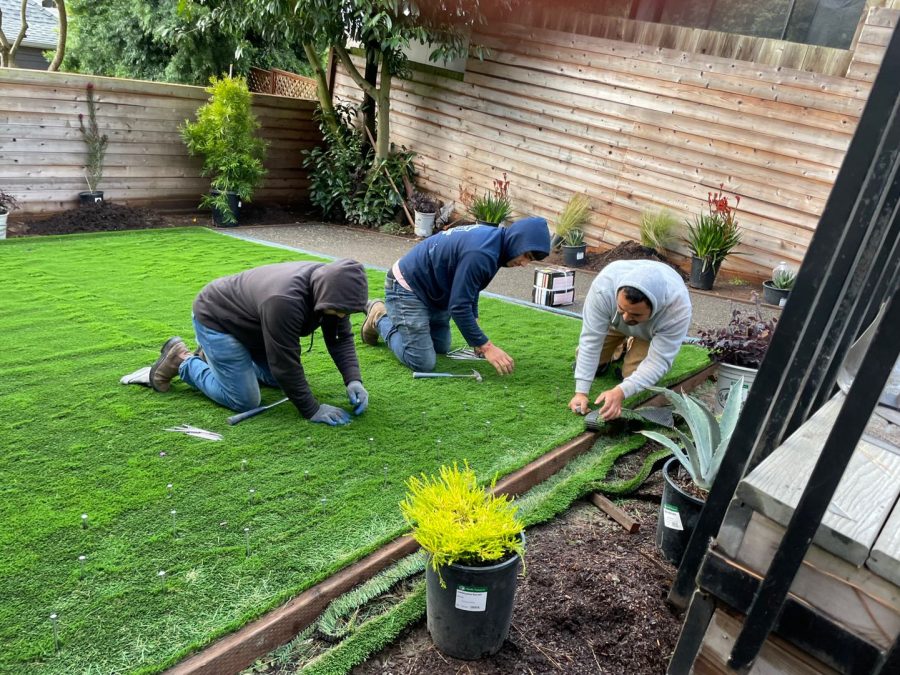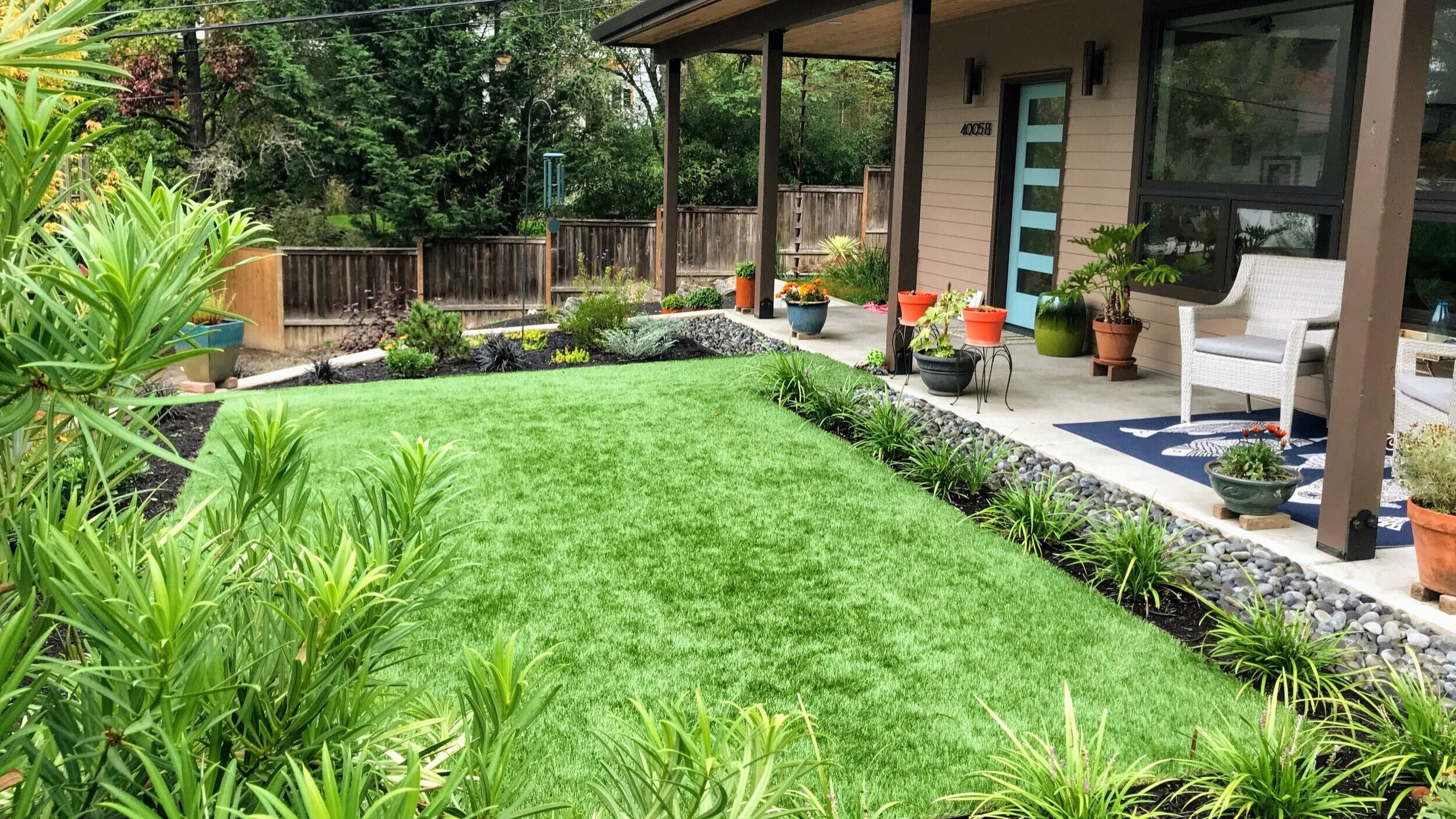Get the Top Turf Installation Phoenix AZ Services for Your House or Business
Get the Top Turf Installation Phoenix AZ Services for Your House or Business
Blog Article
Look Into the Environmental Benefits of Opting for Synthetic Grass Solutions
The adoption of man-made grass options presents a compelling possibility to attend to pushing ecological obstacles. By dramatically reducing water usage and reducing the application of unsafe chemicals, these alternatives not only advertise sustainable landscaping however also shield regional ecological communities. Furthermore, the lower carbon impact linked with reduced maintenance tasks adds to a more sustainable strategy to land monitoring. The implications of these advantages expand beyond simple preservation efforts, increasing questions regarding their long-lasting effect on environment conservation and overall ecological equilibrium. Checking out these measurements reveals an intricate interaction worth taking into consideration.
Water Preservation Advantages
One of one of the most substantial benefits of fabricated turf is its ability to preserve water. Traditional grass yards require substantial irrigation, especially in areas prone to drought or water limitations. On the other hand, synthetic grass does not need watering, substantially minimizing the general need for water resources. This feature is especially helpful in deserts where water scarcity is a pushing concern.
By eliminating the requirement for normal watering, synthetic grass adds to sustainable landscape techniques and aids minimize the environmental effect of too much water intake. The conservation of water prolongs to the decrease of overflow, which can lead to dirt erosion and waterway pollution.
In addition, the installation of artificial turf permits homeowners and towns to assign water sources much more effectively, concentrating on necessary usages such as drinking water and farming. The change towards synthetic turf not just promotes responsible water use however likewise lines up with broader ecological goals focused on preserving natural resources.
As communities increasingly prioritize sustainability, the water conservation benefits of synthetic grass offer an engaging case for its adoption in residential and commercial landscaping projects.
Lowered Chemical Use
The transition to synthetic grass substantially decreases the dependence on chemical therapies frequently made use of in all-natural turf upkeep. Standard grass monitoring usually entails the application of pesticides, herbicides, and plant foods to advertise growth and control parasites. These chemicals can pose risks to human wellness, regional wildlife, and the setting, adding to dirt and water contamination.
In contrast, man-made lawn eliminates the demand for these harmful materials. By lessening the launch of synthetic compounds into the environment, fabricated grass promotes healthier dirt and water systems.
Furthermore, the lack of chemical runoff connected with synthetic grass installments assists shield neighborhood waterways from contamination, sustaining aquatic life and keeping biodiversity. Artificial turf companies phoenix. As areas increasingly focus on lasting practices, selecting fabricated turf provides a sensible option that straightens with environmental conservation goals. Through this shift, homeowner can delight in lavish environment-friendly areas without compromising environmental health and wellness, leading the means for an extra lasting future
Reduced Carbon Impact

Furthermore, the setup of synthetic grass can result in substantial water conservation. Natural yards call for substantial amounts of water for irrigation, which not only includes in the carbon impact connected with water extraction and therapy but also pressures local water resources. On the other hand, artificial lawn requires minimal maintenance, needing more helpful hints no watering, thus considerably decreasing water use and its associated energy expenses.
Additionally, the longevity of synthetic grass adds to its decreased carbon influence. With a life expectancy of approximately 15 years or more, the requirement for frequent replacements site is diminished, causing much less waste and reduced energy consumption in manufacturing and taking care of standard yard options. In general, synthetic grass provides a sustainable alternative for eco aware landscape design.
Habitat Preservation
Habitat conservation is a vital consideration in the argument over landscaping choices, particularly when contrasting fabricated lawn to natural grass. Natural turf yards usually need substantial maintenance, consisting of the use of herbicides, chemicals, and plant foods, which can negatively influence neighborhood ecosystems. These chemicals can seep into the dirt and rivers, harming indigenous flora and animals and interfering with local environments.
On the other hand, man-made grass offers a chance to reduce the eco-friendly footprint of landscape design. By selecting synthetic yard, house owners can minimize the interruption of natural environments associated with standard yard treatment practices. Synthetic grass eliminates the requirement for harmful chemicals, thereby safeguarding close-by wild animals and maintaining the stability of surrounding ecological communities. The installation of synthetic lawn can lead to the conversion of former turf areas right into even more biodiverse landscapes, such as pollinator yards or indigenous plant locations, which can sustain neighborhood wild animals.
Inevitably, the change to artificial turf not only conserves water and reduces upkeep efforts but also cultivates a more harmonious partnership in between human activities and the natural surroundings, advertising environment conservation in the procedure.
Long-Term Sustainability
Long-lasting sustainability is a critical variable in examining the advantages of synthetic turf over conventional turf yards. Among one of the most significant benefits of fabricated grass is its longevity; it can last up to 15-20 years with very little upkeep, whereas all-natural lawn requires frequent reseeding and substitute. This durability reduces the requirement for constant sources, such as water, fertilizers, and chemicals, which are essential for keeping a healthy yard lawn.
In addition, synthetic grass contributes to a decrease in carbon emissions linked with lawn treatment equipment. Standard lawns usually need gas-powered lawn mowers, trimmers, and blowers, every one of which add to air contamination. Turf installation phoenix az. In comparison, synthetic grass gets rid of the web link need for such equipment, promoting a cleaner environment
Moreover, the production of artificial turf increasingly utilizes recycled products, boosting its sustainability profile. As producers embrace green techniques, the ecological footprint of synthetic turf remains to reduce.

Conclusion
The adoption of synthetic grass remedies provides considerable environmental benefits, including significant water preservation, minimized reliance on harmful chemicals, and a reduced carbon footprint. Fabricated turf help in preserving all-natural environments by decreasing land disruption and promoting long-lasting sustainability via the use of sturdy materials. Jointly, these variables highlight the potential of man-made lawn to contribute favorably to ecological health and provide a viable option to traditional landscape design techniques in a significantly resource-conscious globe.
In contrast, synthetic grass does not require watering, substantially lowering the general need for water resources. By reducing the release of synthetic compounds right into the ecosystem, synthetic grass advertises healthier soil and water systems.
Additionally, the setup of man-made lawn can result in significant water conservation. In comparison, synthetic turf requires minimal upkeep, calling for no watering, thereby significantly reducing water use and its linked power costs.

Report this page